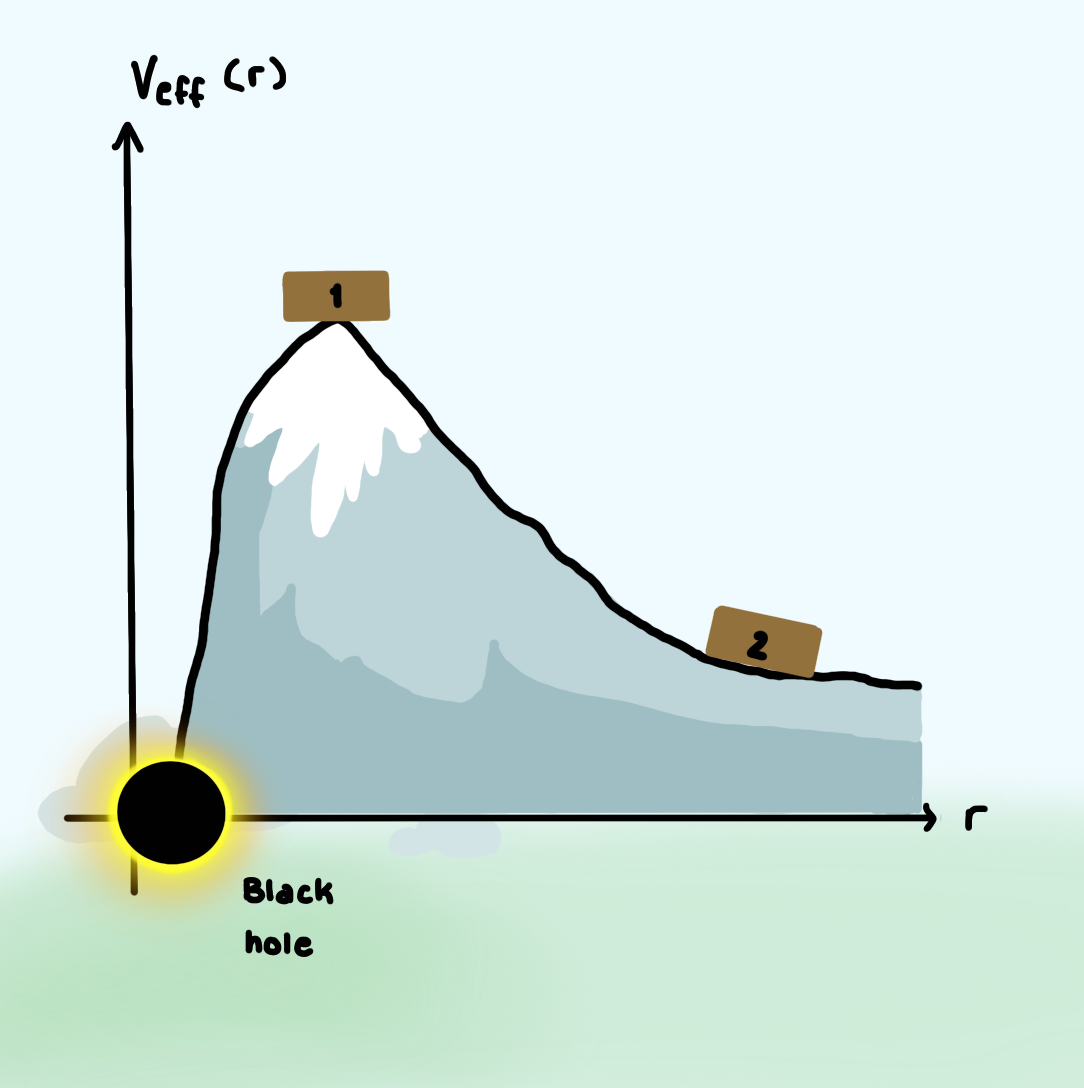We know black holes as a sucky thing (literally) in universe. The definition of a black hole according to NASA:
"A black hole is a place in space where gravity pulls so much that even light can not get out. The gravity is so strong because matter has been squeezed into a tiny space." (nasa.gov)
We got very intrigued by the fact that not even lights can escape. What does that even mean? Does light have a point of no return? We want to dive into that.
r = 2M is point of no return. Everything within this radius will be sucked up and not escape.
Radial light speed by the shell observer can be written as
\(\frac{1}{b^2} \left(\frac{dr_{shell}}{dt_{shell}}\right)^2= \frac{1}{b^2}-\frac{\left(1-\frac{2M}{r}\right)}{r^2}\)
Derived from equations of motion for a photon in terms of the impact parameter b (Lecture notes 2E).
We can further derive an expression (with additional help using equation 7 and 8 from lecture notes 2D) for the effective potential of light.
\(V(x) = \sqrt{\frac{\left(1-\frac{2M}{r}\right)}{r^2}}\)
Effective potential can be described as the shape of a hill which a block slides on. Allow me to illustrate it for you.

The surface on this mountain represents the effective potential of light (black line). The blocks represents light. There are two blocks to represent two potentials of lights, which I will further discuss right now.
Block 1: This is position of the block is unstable. This position is also referred to as critical radius. The reason for that is if I give the block the slightest push, I will fall regardless and not return to its original position.
Push to the left: 100% falling into the black hole
Push to the right: The block will escape the black hole.
Block 2: I should have drawn more of the mountain. Please assume it remains straight for higher values of r. If I push this block it will slide and after time remain still on a flat area (or a pit, it that exists). If I push it again, it will do the same again.
Conclusion based on this:
Light may therefore move in an unstable orbit due to small fluctuations at the peak of potential may cause light to plunge straight into the black hole or escape.
Sources:
NASA. (2018). What is a Black Hole?. Retrieved from https://www.nasa.gov/audience/forstudents/k-4/stories/nasa-knows/what-is-a-black-hole-k4.html
UiO. Lecture notes 2E. Retrieved from https://www.uio.no/studier/emner/matnat/astro/AST2000/h21/undervisningsmateriell/lecture_notes/part2e.pdf
UiO. Lecture notes 2D. Retrieved from https://www.uio.no/studier/emner/matnat/astro/AST2000/h21/undervisningsmateriell/lecture_notes/part2d.pdf
